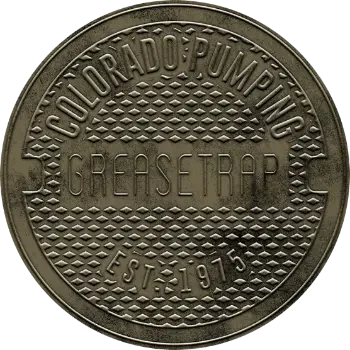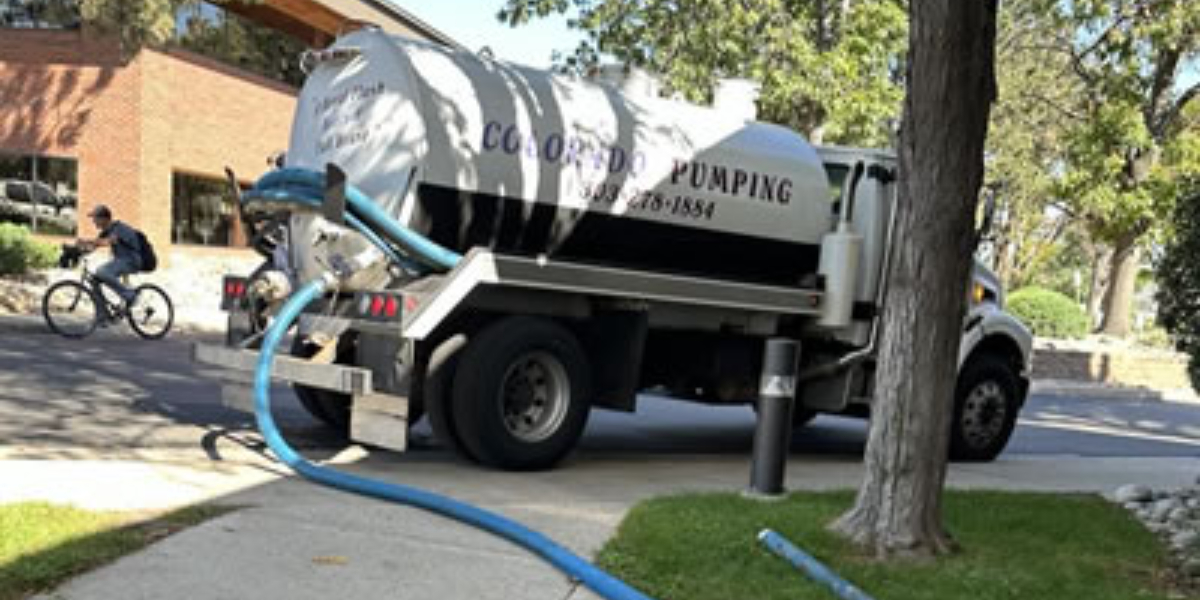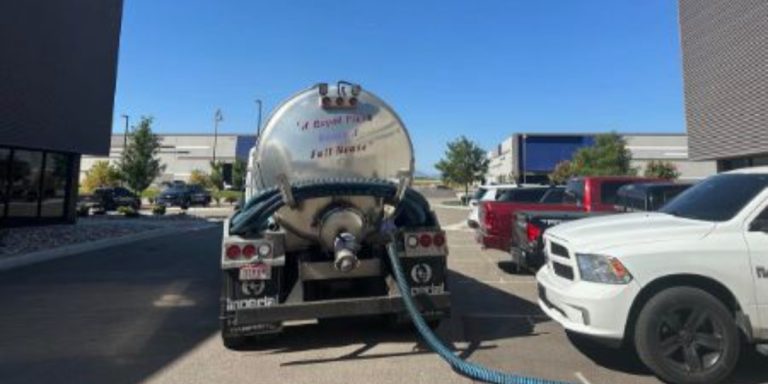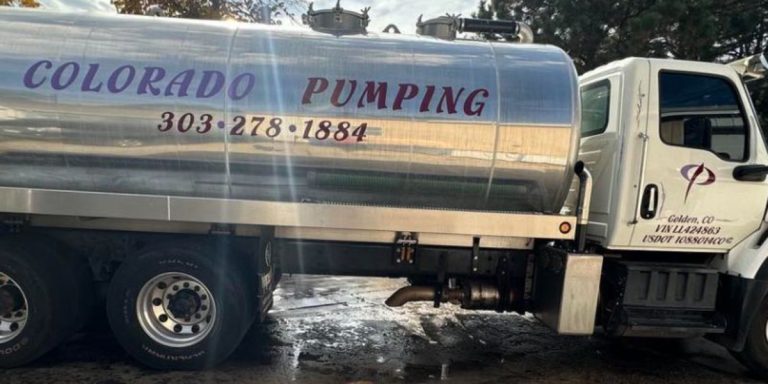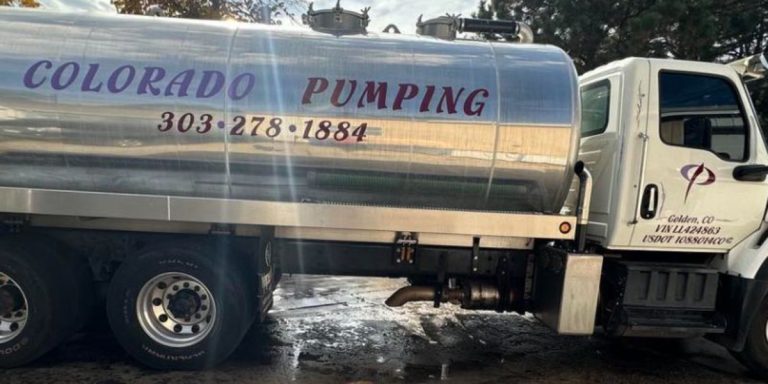Grease Trap or Grease Interceptor – What is The Difference?
If you own or manage a restaurant, café, or commercial kitchen in the Denver Metro area, you’ve likely heard the terms grease trap and grease interceptor. While both help keep fats, oils, and grease (often called FOG) out of your plumbing and the city sewer system, they’re not the same thing. Understanding how they differ, and how to maintain them, is essential for staying compliant and avoiding expensive plumbing problems.
At Colorado Pumping, we’ve been helping Denver-area restaurants, schools, hotels, and institutions maintain their grease management systems since 1978. As a licensed and insured company, we service both small indoor traps and large outdoor interceptors, keeping commercial kitchens compliant, clean, and running efficiently.
Why grease management systems matter
Every commercial kitchen generates wastewater filled with grease, oils, and food particles. Without a separation system, this waste would flow directly into your plumbing and solidify over time. The result is often slow drains, sewage backups, and even health code violations.
A grease management system stops this from happening by capturing grease before it leaves your facility. Both grease traps and grease interceptors use a simple principle: grease floats, solids sink, and clean water passes through the middle. The difference lies in their size, capacity, location, and maintenance needs.
What is a grease trap?
A grease trap is a compact system designed for smaller kitchens with lower wastewater volumes. You’ll usually find them under sinks or close to dishwashing areas. They’re ideal for cafés, coffee shops, and small restaurants where space is limited.
Grease traps typically:
-
- Handle less than 50 gallons per minute
- Are installed indoors, close to the kitchen plumbing
- Require frequent cleaning, usually every 30 to 90 days
- Are made of PVC, stainless steel, or plastic
Because of their size, grease traps fill up quickly and can produce strong odors if neglected. However, their accessibility makes them easier to inspect and service regularly.
What is a grease interceptor?
A grease interceptor is a larger system built for high-volume food service establishments such as large restaurants, hotels, hospitals, and schools. These units are installed underground and outside the building, where they can handle much larger flow rates.
Grease interceptors typically:
-
- Manage over 50 gallons per minute
- Are constructed from concrete, steel, or fiberglass
- Hold hundreds or even thousands of gallons
- Require professional vacuum trucks for cleaning
- Need service every three to six months
Interceptors are more durable and can handle continuous kitchen operations, but they still need scheduled maintenance to prevent buildup and odor problems.
The main differences between grease traps and interceptors
Although grease traps and grease interceptors serve the same purpose, their differences are significant. Understanding these differences will help you choose the right system and maintain it properly.
1. Size and location
Grease traps are small and located inside your building, usually under a sink. Interceptors are large tanks installed outside and underground.
-
- Traps are suited for smaller kitchens with limited plumbing fixtures
- Interceptors serve larger facilities with multiple sinks and dishwashers
- Interceptors require specialized access and pumping equipment
2. Capacity and water flow
A grease trap handles less wastewater, typically under 50 gallons per minute. Interceptors are designed for high-volume operations.
-
- Traps fill up quickly and need frequent maintenance
- Interceptors manage larger volumes for longer periods
- High-flow kitchens should always use interceptors for efficiency
3. Cleaning frequency
Grease traps may need monthly cleaning, while interceptors often go three to six months between services.
-
- Smaller capacity means traps reach the 25% fill level faster
- Larger interceptors hold more but require heavy-duty pumping when full
- Both systems should be checked regularly to prevent clogs and odor
4. Construction materials
Traps are lightweight and made of materials like PVC or metal. Interceptors are heavy-duty structures made from concrete or fiberglass.
-
- Traps are easy to install indoors
- Interceptors are built to handle long-term, outdoor use
- The stronger construction of interceptors makes them more durable
5. Accessibility and maintenance
Grease traps are easy to access but can create odors inside the building if not cleaned frequently. Interceptors are buried outside, requiring specialized service trucks.
-
- Traps are convenient for quick inspection
- Interceptors reduce odor issues but need professional servicing
- Both should be cleaned by a licensed pumping company for compliance
If you’re unsure which system your business has, Colorado Pumping can inspect your setup and establish a custom maintenance plan to ensure consistent performance and compliance.
Why regular pumping is essential
No matter which system you use, both rely on separation and gravity. When grease and solids accumulate, the system loses its effectiveness, allowing FOG to escape into the sewer line. This can cause serious plumbing issues, health code violations, and costly downtime.
Neglecting service can lead to:
-
- Slow-draining sinks and floor drains
- Strong odors throughout the kitchen or dining area
- Overflow or leaks near the trap or interceptor
- Violations from local health or environmental departments
- Higher repair costs from emergency clogs and backups
Routine pumping from Colorado Pumping eliminates these issues. Our technicians clean the entire system, not just the top layer, to ensure optimal flow and long-term performance.
What happens during professional service
When we service your grease trap or interceptor, we use a detailed process that restores performance and ensures compliance:
-
- Inspection – We locate your system, measure grease depth, and assess condition.
- Vacuum pumping – Our 3,500-gallon trucks remove all grease, solids, and water.
- Scraping and cleaning – Interior walls, baffles, and fittings are cleaned of buildup.
- System check – We inspect for damage, corrosion, or faulty seals.
- Proper disposal – All waste is transported to licensed treatment facilities.
- Documentation – You receive a record of service for your compliance files.
This thorough approach ensures your system operates at full capacity while meeting all Denver and state environmental standards.
Case study: how regular service saved a Denver restaurant
A busy restaurant in downtown Denver called Colorado Pumping after experiencing repeated backups and strong odors near their dish area. The owner assumed their under-sink trap was the issue, but our inspection revealed an outdoor 1,000-gallon interceptor that hadn’t been serviced in almost a year.
We pumped out several hundred gallons of hardened grease, cleaned the system thoroughly, and set them on a recurring 90-day maintenance plan. Since then, they’ve avoided plumbing issues and passed every health inspection without a single violation.
How to determine which system you have
If you’re unsure whether you have a grease trap or interceptor, here are a few ways to tell:
-
- Check the location: Indoor systems are typically grease traps; outdoor, underground tanks are interceptors.
- Review system size: Traps are small and portable, while interceptors require manhole access.
- Look at your plumbing plans: Building permits often specify the type of grease management system installed.
- Ask a professional: Colorado Pumping can inspect your system, identify its type, and establish the ideal pumping schedule.
Knowing which system you have helps you avoid overfilling, prevent odors, and stay compliant with city and county regulations.
Why Denver businesses trust Colorado Pumping
For over 45 years, Colorado Pumping has been the go-to company for grease trap, interceptor, and septic maintenance across the Denver Metro area. Our clients continue to choose us because:
-
- We are family-owned and operated, serving Colorado since 1978
- Our company is licensed and insured for all pumping and hauling services
- We offer 24-hour emergency service when problems can’t wait
- Our technicians are experienced, professional, and reliable
- We follow strict environmental compliance standards for all waste disposal
- We have a 4.9-star customer rating for dependable, trustworthy service
Serving Denver Metro and surrounding areas
Colorado Pumping proudly serves businesses and property owners in:
We also provide septic tank pumping, lift station maintenance, and RV park septic services throughout the area.
Protect your business with professional grease pumping
Keep your kitchen compliant and efficient with expert service from Colorado Pumping
Whether your facility uses a grease trap or a grease interceptor, regular pumping keeps your plumbing free of clogs and your business operating smoothly. Our team can inspect your system, recommend a cleaning schedule, and handle every aspect of service safely and professionally.
Call (303) 278-1884 or request an estimate online to schedule your next service. We proudly serve Denver, Arvada, Aurora, Golden, and nearby Colorado communities with reliable grease trap, interceptor, and septic maintenance you can count on.
